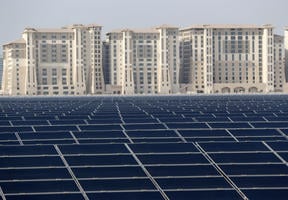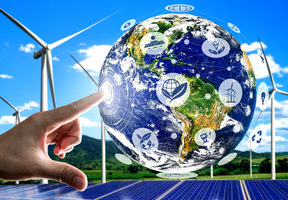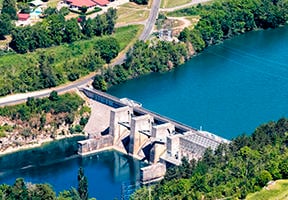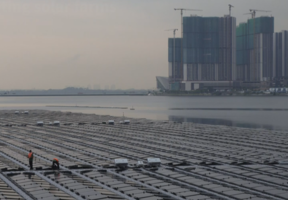What can we expect from the COP27 in Egypt?
Updated on 09.08.20235 min read
The COP27 (Conference of Parties), the annual international meeting to combat climate change, is to be held from November 7-18, 2022 in Sham el-sheikh, Egypt, on the shores of the Red Sea.

© @ Wikimedia Commons / Rafaat
COP27 in figures
As for every conference, the COP27 is an opportunity for a wide-reaching, international meeting, with over 35,000 people expected to attend. In addition to the official representatives from the 198 participating countries and institutions (the “parties”), environmental NGOs, youth organizations, businesses, investors and councilors from the major world cities are also going to be there. Over 2,000 speakers will take it in turn to address the participants and talk about a wide variety of subjects. The Egyptian organization team has listed over 300 topics for discussion, related to and climate change - a number that underlines the complexity of these issues.
An unstable international context
The COP27 will be held in a tense international context, already weakened by the impact of the Covid-19 pandemic.
- The war in Ukraine has shaken up the energy balances and generated unprecedented increases in gas prices and rates.
- The conflict is also threatening the production of foodstuffs, in particular cereal crops, a particularly delicate issue for Africa.
- Summer 2022 was marked by extreme weather conditions, such as heatwaves in China, India, Europe and North Africa, which caused massive forest fires.
The long-standing history of the COP
The decision to have all the world countries meet once a year, was made when the United Nations Framework Convention on Climate Change (UNFCC) was established at the Earth Summit in Rio de Janeiro, in 1992. The COP have been held on an annual basis since 1995, with varying degrees of success. The most memorable were the COP3 in Japan, which gave rise to the and above all, the COP21 in Paris in 2015.
The Paris Agreement, and the first of its kind to have a universal reach, set down the objective of keeping the rise in mean global temperature to “well below 2°C” (and preferably limit the increase to +1.5°C) by the end of the century, compared with the levels measured in the 19th century, before the industrial revolution.
Emergency: reducing greenhouse gas emissions
In September 2022, a report supervised by the World Meteorological Organization stated that the last seven years were the hottest ever recorded.
After a short respite due to the repercussions of Covid-19, recorded levels of greenhouse gas emissions from fossil energies currently exceed those recorded prior to the pandemic.
Yet, according to the international experts of the IPCC (Intergovernmental Panel on Climate Change), our current use of fossil fuels is leading to irreversible changes in the very long term. They estimate that to stay below the 1.5°C threshold, emissions need to start falling immediately, to reach "net zero emissions" (carbon neutrality) by 2050.
From Glasgow to Sharm el-Sheikh
The COP26 in Glasgow was a disappointment, even though a few tentative steps forward were made:
- For the first time, the possibility of phasing out was debated, even if the term “phase down” was preferred at the last minute.
- Methane emissions, a powerful greenhouse gas, were included in future discussions.
The COP27 will include two main points to continue the efforts undertaken over the last few years:
- Encourage member States to ramp up their “national contributions” by 2030. In the Paris Agreement, rather than set a global reduction target, all too often disregarded by all concerned, each country was asked to define a Nationally Determined Contribution, or NDC, to indicate the effort it could realistically make.
- Increase help for developing countries and, in particular, finalize the 100 billion dollars of annual financial aid, the principal of which was adopted in 2010.
Find out more:



















